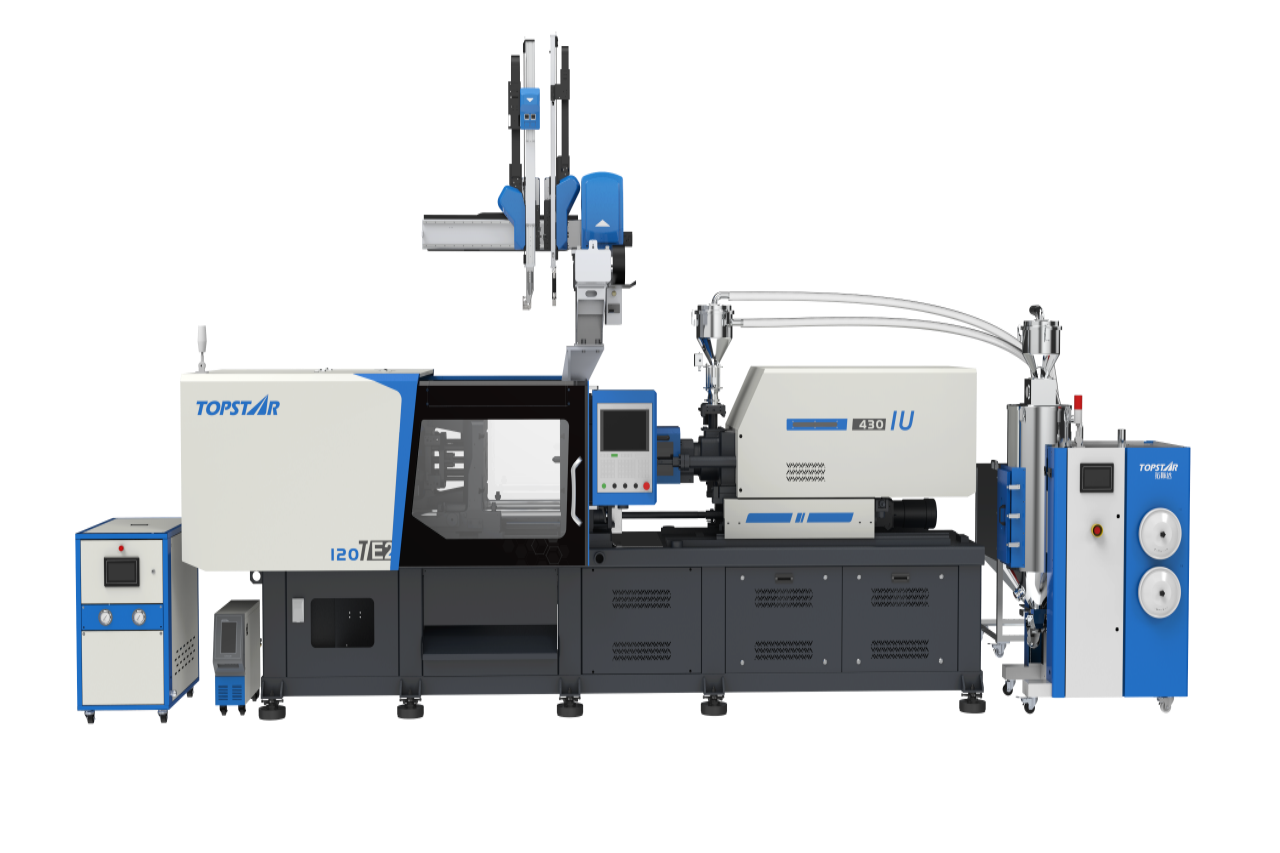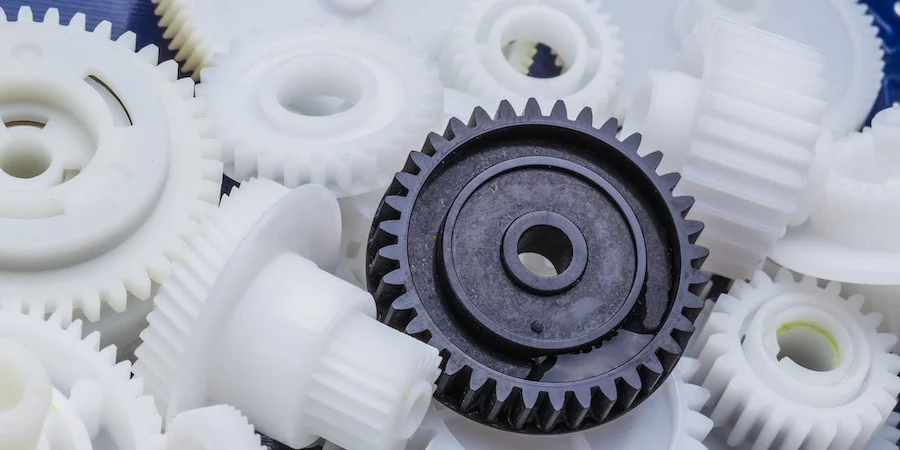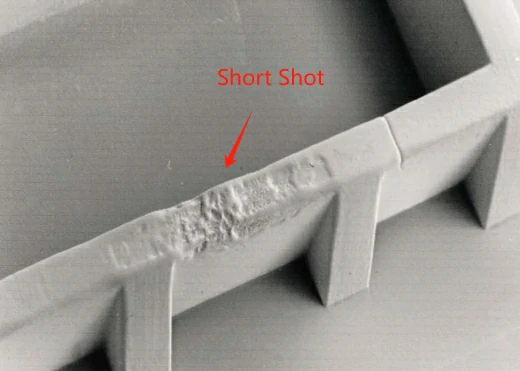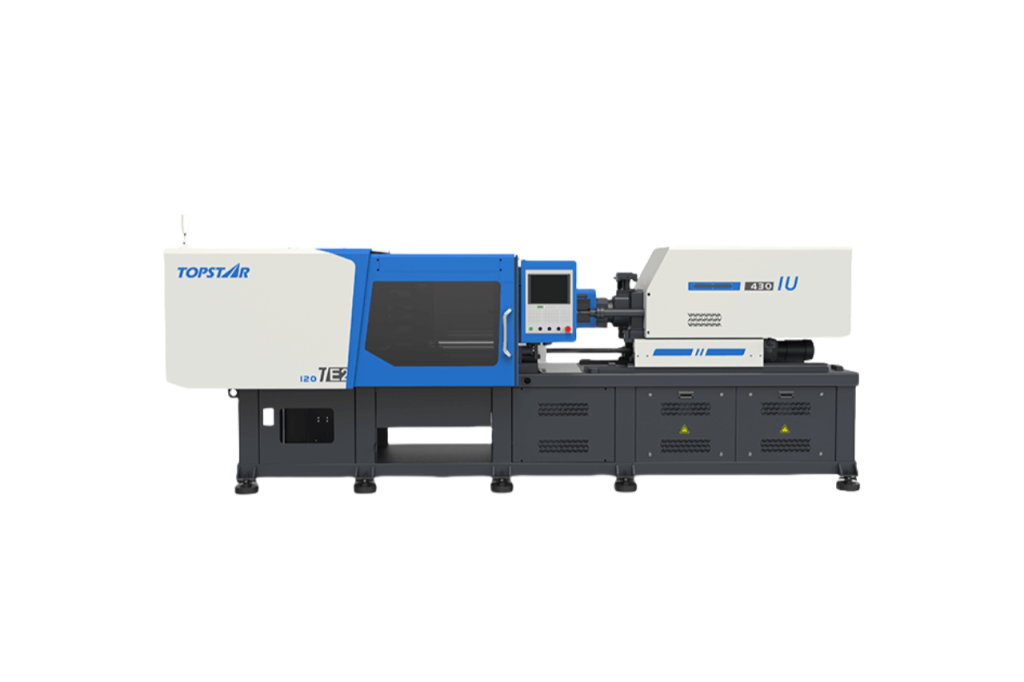What defects of injection molding can the all electric injection molding machine solve?
- all electric injection molding machine
- all electric injection molding machines
- Injection molding machine
2025/06/25 By Topstar

Working with hydraulic injection molding machines is prone to injection molding defects such as warpage, material shortages, and dents, which can be reduced by switching to all electric injection molding machines. They are electrically driven and can provide tighter control over every stage of the entire process. At the same time, all electric injection molding machine can also adjust speed curves, employ multi-stage pressure control, and maintain consistent thermal management to address each defect. As well as being able to use servo motors to improve dimensional accuracy, increase injection speed, and reduce energy consumption and improve cycle time.
Eliminate warpage and dimensional variation with all electric injection molding machine.
Parts produced by hydraulic injection molding machines often exhibit warpage and dimensional inaccuracies due to inconsistent clamping forces and temperature fluctuations. All-electric injection molding machines address these issues by delivering precise and repeatable clamping forces through servo control. For example, Topstar’s electric injection molding machines can maintain clamping force within ±0.5% of the target value, ensuring uniform cavity compression; therefore, molded parts are consistently less likely to deform during cooling. Additionally, the rapid servo-driven screw movement stabilizes barrel and mold temperatures more effectively, minimizing heat buildup and preventing local hot spots. By leveraging these features, all electric injection molding machines achieve unprecedented dimensional stability in precision molding applications.

Preventing Short Shots and Incomplete Fill
The root cause of molten plastic failing to fill the mold cavity completely is insufficient injection speed, insufficient pressure, or cold material. All electric injection molding machines can effectively prevent short shots with their high-speed injection capabilities and multi-stage pressure control. They can utilize electric drive to accelerate quickly, up to 600 mm/s, to overcome viscous resistance in thin-walled or complex molds. Secondly, operators can define a multi-stage injection curve during operation to ramp up pressure precisely at critical fill percentages, preventing premature switching. Additionally, electric servo-driven screw positioning maintains a consistent injection volume, eliminating the fluctuations common in hydraulic systems. When you calibrate the injection peak pressure to within ±1 bar, you guarantee complete mold cavity filling, even with high-glass fiber composites. By deploying these precise speed and pressure controls, they can eliminate short shots in a variety of polymer systems and geometries.

Reduce sink marks and internal stress with all electric injection molding machine.
Sink marks and internal stress occur when the molten plastic of the injection molding machine cools unevenly or under-packs. With all electric injection molding machines, I can solve these problems by programming precise packing profiles and optimizing cooling times. In addition to high-speed filling, you set the packing pressure to match the cavity pressure profile. This ensures the packing and holding phases counteract material shrinkage, virtually eliminating sink marks in thick sections. In addition, the fast response of electric injection molding machines enables shorter and more frequent packing cycles, which evenly distributes pressure and reduces residual stress. Operators can use real-time cavity pressure feedback during production to dynamically adjust packing time, eliminating stress points from over- or under-packing. By fine-tuning the packing phase with servo precision, all-electric injection molding machines can produce parts with smooth surfaces and minimal internal strain.

Eliminate flash and over-packing
Flash is caused by the injection molding machine’s uncontrolled injection speed or excessive clamping force. Traditional hydraulic injection molding machines often exceed target pressure, causing flash even with perfect mold alignment. If you use an all electric injection molding machine, you can avoid this situation by strictly controlling the screw movement and immediately cutting off the pressure. The electric drive can record the position and torque in real-time to achieve precise switching between filling and holding pressure.
The ability to set the switching threshold based on the actual cavity pressure feedback allows for immediate stopping of the injection at the exact moment when the mold seal is formed. Additionally, their clamping mechanism applies only the necessary tonnage to maintain the seal without excessively stressing the mold. Fine motion control combined with closed-loop feedback eliminates flash, cutting scrap rates and slashing mold maintenance costs.
Preventing ejection and burn marks
High injection speeds and localized heating can cause ejection and burn marks caused by trapped air. All electric injection molding machines address these defects with customizable injection acceleration profiles and precise exhaust control. For example, operators can program a two-stage acceleration profile, first fast filling, then gate-zone deceleration to stabilize the fluid front. This method prevents ejection pattern formation. Additionally, the electric servo-driven screw back pressure maintains optimal melt uniformity and reduces cavitation, which can cause burn marks. When you equip your mold with appropriately sized vents and synchronize the vent opening time with the injection speed profile, you ensure that trapped air escapes before the melt front passes through. By combining advanced motion control with mold venting strategies, all-electric injection molding machines can produce flawless, high-gloss surfaces.
Reduce defects in production.
With the precision of their servo drives, real-time feedback, and programmable motion trajectories, all electric injection molding machines can solve a range of molding defects, including warpage, underfill, sink marks, flash, ejection, and burning. Additionally, you can utilize multi-stage injection speeds to prevent incomplete filling, calibrate holding pressure to eliminate sink marks, apply precise clamping force to minimize flash and synchronize venting with decelerated filling to prevent ejection. Additionally, they are more energy-efficient and repeatable, which reduces operating costs and improves part quality.
TRENDING POSTS
- TOPSTAR Global Open Day 2025: Humanoid Robot Debuts, Pioneering a New Decade of Intelligent Manufacturing 2025/06/25
- Topstar Showcases TE II Electric Injection Molding Machines at InterPlas Thailand 2025 2025/06/25
- Topstar Expands Its Ecosystem Partnerships to Drive Smart Manufacturing Innovation 2025/06/25
- What factors can cause delays in the injection molding process of plastic molding machine? 2025/06/25
HOT TOPIC
- .ervo motor-driven linear robots
- •
- 1.0 guangdong topstar technology co. ltd
- 1.0 topstar china
- 1.0 topstar robot
- 11
- 160℃ mold temperature controller
- 170 ton injection molding machine
- 2
- 21
- 23
- 3 axis robot
- 3 axis robots
- 3 in 1 Compact Dehumidifying Dryer
- 3-axis robot
- 3-axis robots
- 39
- 41
- 460T injection molding machine
- 5-axis CNC machine
- 62
- 90 ton injection molding machine
- accuracy
- Air Chillers
- all electric injection molding machine
- all electric injection molding machines
- All-electric injection molding machines
- and overall production quality. Therefore
- AP-RubberPlas
- automated injection molding machine
- Automation changed engineering
- automation of injection molding robots
- automotive parts injection molding
- auxiliary machine
- Bench Injection Molding Machine
- Cabinet dryer manufacturers
- Cabinet dryers
- chiller
- CNC Drilling Machine
- CNC Drilling Machines
- cnc engraving machine manufacturer
- cnc laser cutting machine manufacturer
- CNC machine
- CNC Machine Center
- CNC Machine for Sale
- CNC Machine Manufacturing
- CNC Machine Tool
- CNC machine tool product
- CNC Machining Center
- CNC wood carving machine
- Cooling system
- Cross-Walking Single Axis Servo Cylinder Robot
- Cross-Walking Single-Axis Servo Cylinder Robot
- Cross-Walking Three-Axis/Five-Axis Servo Driven Robot
- cross-walking three-axis/five-axis servo-driven robot
- Dehumidifier Dryer
- Dehumidifying Dryer
- delta parallel robot
- Desktop Injection Molding Machine
- Desktop injection molding machines
- Desktop Molding Machine
- desktop plastic injection machine
- Desktop Plastic Injection Molding Machine
- Digital Transformation
- direct clamp injection molding machine
- Direct clamp injection molding machines
- Dosing & mixing system
- Drilling Centers
- Drying and dehumidification system
- drying and dehumidifying equipment
- Drying and Dehumidifying System
- drying system
- effective and efficient. Cabinet dryers are also used in other industries where large quantities of material need to be dried
- efficient injection molding machine
- elbow hydraulic injection molding machines
- electric injection molding machine
- electric injection molding machines
- energy-efficient injection molding robot
- energy-efficient water chiller
- energy-efficient water chillers
- energy-saving injection molding machine
- etc. Among injection molding robots
- exhibition
- features of CNC machine
- Feeding And Conveying System
- Five Axis Machine Center
- Flexible Production Line
- Fully automatic injection molding machine
- Gathering Topstar
- giant injection molding machine
- GMU-600 5-Axis Machining Center
- Granulating & Recycling System
- Heavy duty injection molding machine
- High-precision electric molding machines
- high-precision plastic molding machines
- high-speed all electric injection molding machine
- high-speed electric injection molding machine
- High-Speed Packaging Injection Molding
- Honeycomb rotor dehumidifier
- horizontal injection molding machine
- Horizontal Injection Molding Machines
- Horizontal Injection Moulding Machine
- Horizontal Mixer manufacturer
- How The CNC Machine Works
- hybrid injection molding machine
- hydraulic injection molding machine
- Hydraulic Injection Molding Machines
- in this article
- Industrial AI
- Industrial Automation
- Industrial robot
- Industrial Robot Chinese brand
- industrial robot parts
- industrial robot supplier
- Industrial robots
- Industry Chain
- Injection Manipulator
- injection manipulator robot
- injection mold machines
- Injection molding
- Injection molding automation
- Injection Molding Automation Solution
- injection molding dryer
- Injection molding equipment
- injection molding hopper dryer
- Injection molding machine
- injection molding machine brand
- Injection Molding Machine Factory
- Injection Molding Machine Manufacture
- Injection molding machine manufacturer
- injection molding machine manufacturers
- Injection molding machine procurement
- injection molding machine robotic arm
- injection molding machine with a robot
- Injection molding machines
- injection molding material dehumidifying
- injection molding plant
- injection molding process
- Injection Molding Robot
- injection molding robot arm
- Injection molding robot automation
- Injection molding robotic arm
- injection molding robots
- Injection moulding machine
- injection moulding machines
- Injection Moulding Robots
- Injection Robot
- Injection robot arm
- Injection robot manufacturer
- Injection robot wholesale
- injection robots
- Intelligent Factory
- intelligent injection molding machines
- Intelligent Manufacturing
- intelligent mold temperature
- intelligent mold temperature controller
- Intelligent mould temperature controller
- InterPlas Thailand 2025
- Introducing Injection Robot
- It is the best choice for drying large quantities of material at once. Cabinetmakers use these machines because they are fast
- Large flow water type mold temperature controller
- large injection molding machine
- large injection molding machines
- Learn what industrial automation and robotics is
- linear robot
- linear robots
- low speed sound-proof granulator
- machine plastic molding
- make sure to add some! Improvements (2) Keyphrase in introduction: Your keyphrase or its synonyms appear in the first paragraph of the copy
- manipulator machine
- manufacturing
- Manufacturing Innovation
- medical grade injection molding machines
- Medical Injection Molding
- medical injection molding machine
- medical injection molding machines
- micro injection molding machine
- middle speed granulator
- Mini CNC machine manufacturers.
- mobile cover making machine
- Mold Temperature Control System
- mold temperature controller
- mold temperature controllers
- molding machine
- molding material Dehumidifying System
- mould temperature control system
- mould temperature controller
- mould temperature controllers
- New electric injection molding machine
- nitrogen dryer manufacturer
- nitrogen dryer system manufacturer
- Oil type mold temperature controller
- Oil type mold temperature controllers
- open day
- optical component injection molding
- Outbound links: No outbound links appear in this page. Add some! Images: No images appear on this page. Add some! Internal links: No internal links appear in this page
- packaging injection molding
- Packaging Solutions
- PET Preform injection molding
- phone case maker machine
- phone case making machine
- phone cover making machine
- plastic bottle making machine
- plastic bottle manufacturing
- plastic bucket making machine
- plastic bucket manufacturing
- Plastic chair making machine
- plastic forming equipment
- plastic hopper dryer
- plastic injection machine
- plastic injection machines
- plastic injection molding
- Plastic injection molding equipment
- Plastic injection molding machine
- Plastic Injection Molding Machines
- plastic injection moulding machine
- plastic injection moulding machines
- plastic injection robot
- plastic molding
- Plastic Molding Industry
- Plastic Molding machine
- plastic molding machine 1
- Plastic Molding Machines
- plastic molding press
- plastic moulding machine
- plastic phone case making machine
- plastic-molding machine
- powerful granulator
- Powerful Type Sound-Proof Granulator
- precision injection molding
- precision injection molding machines
- production of plastic seats
- pure water mould temperature controller
- Robot injection molding
- robot injection molding machine
- robot manufacturing companies
- Robotic arm for injection molding machine
- robotic injection molding machines
- robotics in injection molding
- SCARA robot
- SCARA robots
- Service-oriented manufacturing
- Servo Cylinder Robot
- servo driven robot
- Servo Driven Robots
- servo injection molding machine
- servo injection robots
- servo motor-driven linear robots
- servo-driven 3-axis robot
- Servo-Driven Robot
- Setup of injection machine
- Silicone Injection Molding Machine
- six-axis industrial robot
- Smart Manufacturing
- Stainless Hopper Dryer
- Stainless Hopper Dryers
- star club
- swing arm robot
- take-out robot
- take-out robots
- Thailand 4.0
- the choice between servo-driven robots and hydraulic robots will have a certain impact on efficiency
- the most popular injection molding machine
- the type of injection molding robot
- TIC2000 Control System
- TMII injection molding machine
- toggle clamp injection molding machine
- Toggle Hydraulic Injection Molding Machines
- toggle injection molding machine
- Top 10 brands of injection robots
- Topstar
- Topstar Electric Injection Molding Machine InterPlas Thailand 2025 Smart Manufacturing Thailand 4.0
- Topstar Engineering
- Topstar Industrial Robots
- Topstar injection molding intelligent
- Topstar Scara Robots
- Useful Injection molding machine
- Vertical machining centers
- volumetric type blender
- water chiller
- water chillers
- water distributor
- water type mold temperature controller
- Water Type MoldTemperature Controller
- Water-Type Mould Temperature Controllers
- We often face choices when performing injection molding. We will choose the type of injection molding machine
- wholesale of injection molding machines
- x carve CNC
- 热门查询 点击次数 展示 排名 topstar
